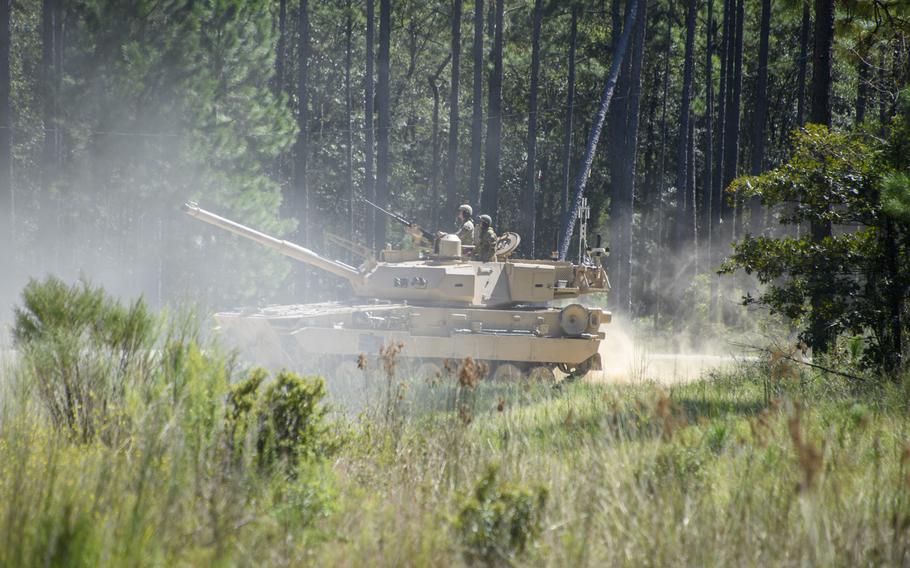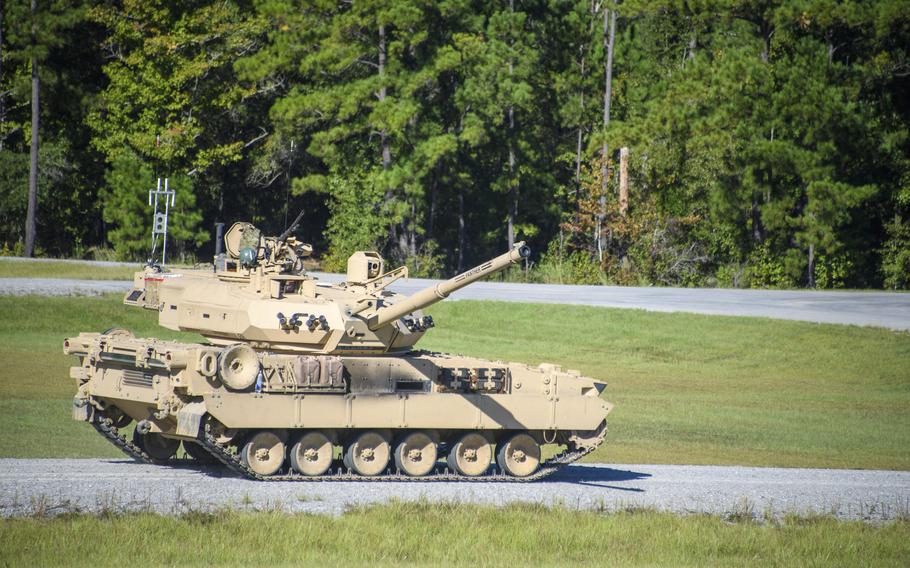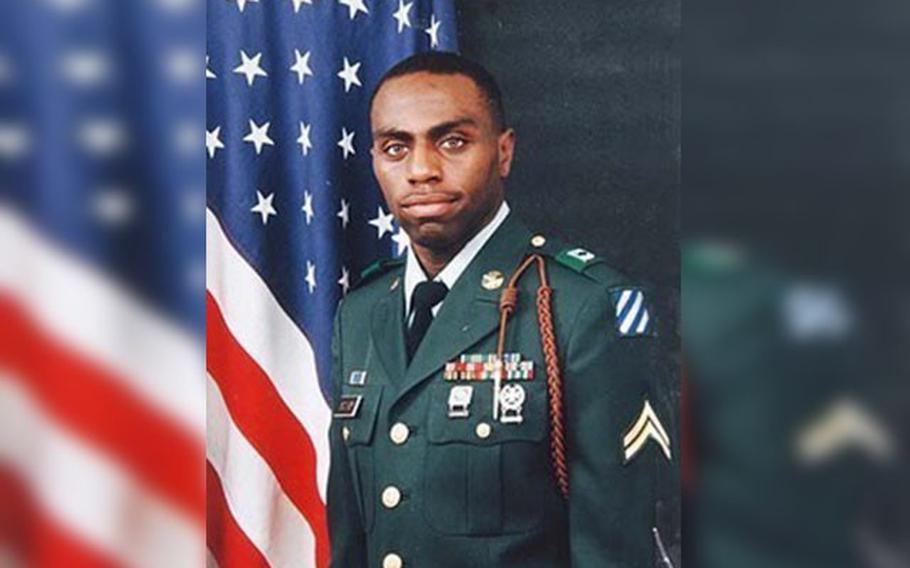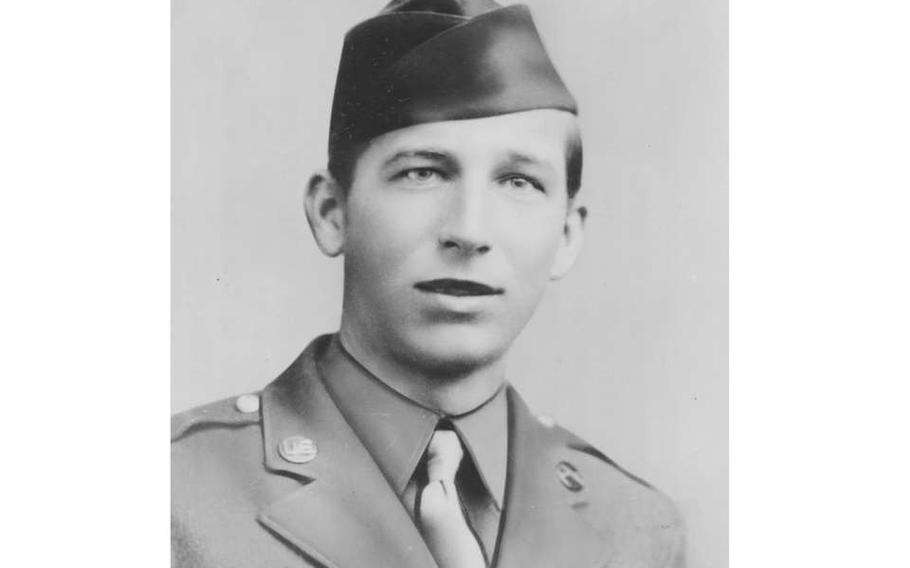
Soldiers operate the M10 Booker Combat Vehicle to provide feedback to developers in this undated photo. The vehicle was previously known as the Protected Mobile Firepower Ground Combat Vehicle. Its new name honors fallen Staff Sgt. Stevon A. Booker, who was killed in Iraq, and Pvt. Robert D. Baker, who died fighting in Tunisia in World War II. (U.S. Army)
The Army's first new major combat vehicle in two decades will be known as the M10 Booker Combat Vehicle, honoring fallen soldiers killed in the Iraq War and World War II, service officials said.
Top Army leaders on Saturday afternoon during an Army birthday celebration at Fort Belvoir, Va., were set to unveil the official name for the vehicle — a light tank-like assault weapon — that had been previously known as the Mobile Protected Firepower Ground Combat Vehicle. The name honors Staff Sgt. Stevon A. Booker, who received the Distinguished Service Cross posthumously for life-saving valor in the 2003 Iraq invasion, and Pvt. Robert D. Booker, who was posthumously awarded the Medal of Honor for heroic actions in Tunisia in 1943 that cost his life, Army officials said Thursday.
Staff Sgt. Booker was an armor crew member with the 3rd Infantry Division, and Pvt. Booker was an infantryman with the 34th Infantry Division. Doug Bush, the Army’s assistant secretary for acquisition, logistics and technology, said their differing jobs highlighted what the M10 is meant to do — bring new firepower and frontal-assault capabilities to light infantry formations. The armored vehicles will be operated by tankers but fight alongside and ahead of light infantry forces.
“The stories of these two hero-soldiers articulate the exact needs for the M10 Booker Combat Vehicle,” Bush said. “Soldiers will now have an infantry assault vehicle that brings a new level of lethality to our ground forces and allows our men and women in uniform an advanced level of protection.”
The first M10 Bookers are expected to arrive to the Army in November, said Maj. Gen. Glenn Dean, the Army’s program executive officer in charge of ground combat systems. The Army expects to stand up its first M10 battalion to conduct initial operations testing in late 2024 or early 2025, Dean said. He declined to say where the first M10 battalion would be located.

The M10 Booker Combat Vehicle, a new light tank-like assault weapon, pictured in this undated photo, was officially unveiled by the Army on Saturday, June 10, 2023. (U.S. Army)
Eventually, the Army intends to build M10 battalions into its light infantry brigade combat teams, including its airborne units. While the vehicle cannot be air dropped, it can be transported by air — two can fit inside a C-17 transport jet, Dean said.
Though the M10 looks much like an M1 Abrams main battle tank, the Army has decided against classifying it as a tank. Dean would not say precisely why that decision was made, noting it was a doctrinal decision and not the responsibility of his unit, which is focused on development and acquisition.
He joked the Booker “sort of looks like, smells like, feels like” a tank. In fact, the weapon, built by General Dynamics, shares many aspects of the Abrams. It will be manned by four tankers in a cockpit nearly identical to an Abrams and sports a heavy, 105mm direct fire cannon, like older models of Abrams.
But the Booker is much lighter than the newest versions of the Abrams tanks, which have 120mm main guns. The Army’s M1A2 SEPv3 Abrams tank weighs nearly 74 tons and the M10 will weigh about 42 tons, the service said. The M10 also will be significantly less expensive. The latest Abrams costs about $24 million per tank, but the Bookers are expected to cost about $12.9 million per vehicle, which includes spare parts and the costs to field and train for the new weapons, Dean said.
The program, which began in 2015, has thus far been on time and on budget, he said.
Bush said choosing the name amounted to a major milestone for the program, which signaled the Army’s confidence in the new product.
“It’s really cool to get to name something after two amazing soldiers,” he said. “The armor community, the infantry community worked really hard on that, and came up with I think a really good solution. So, it’s exciting to get out of the acronym business [calling it the MPF] and into actually calling it something it’s for real going to be called.”
Staff Sgt. Stevon A. Booker
Staff Sgt. Booker’s Distinguished Service Cross, the second-highest Army medal for battlefield heroics, was awarded April 5, 2019, exactly 16 years after he was killed. Booker’s death came as he protected his flank while helping lead the 3rd ID’s assault into Baghdad, known as the Thunder Runs, which toppled Saddam Hussein’s regime at the opening of Operation Iraqi Freedom.

Army Staff Sgt. Stevon A. Booker. (U.S. Army)
When his tank unit came under fire during the raid into Iraq’s capital, Booker “immediately reacted,” according to the award citation. As he communicated the situation with his commanders, he returned fire on the machine gun mounted on his Abrams tank and “reassured his crew that they would make it to their objective.”
"When both his and his crew's machine guns malfunctioned, Booker, with total disregard for his personal safety, exposed himself by lying in a prone position on top of the tank's turret and accurately engaged the enemy forces with his personal weapon," according to the award citation. "While exposed, he effectively protected his platoon's flank and delivered accurate information to his command during a critical and vulnerable point of the battle."
From that exposed position, he destroyed an enemy vehicle before the troops inside could attack his platoon, and he continued to fire on enemy forces while the tank rolled through the fight for nearly 5 miles “until he was mortally wounded,” according to citation.
Pvt. Robert D. Booker
Pvt. Booker was awarded the nation’s highest military honor about a year after his April 9, 1943, death while engaged with enemy forces near Fondouk, Tunisia.

Pvt. Robert D. Booker. (U.S. Army)
Under heavy machine gun and mortar fire, Booker carried a light machine gun and a box of ammunition “over 200 yards of open ground” to set up a fighting position, according to his medal citation.
“He continued to advance despite the fact that two enemy machine guns and several mortars were using him as an individual target,” the citation reads.
As he neared his chosen fighting position, enemy artillery fire began to fall near him, but he “immediately commenced firing” on two enemy machine gun positions.
He was wounded, but he continued to fight, destroyed one machine gun position before he was struck again, suffering the wound that would kill him.
“With his last remaining strength, he encouraged the members of his squad and directed their fire,” according to his Medal of Honor citation. “Pvt. Booker acted without regard for his own safety. His initiative and courage against insurmountable odds are an example of the highest standard of self-sacrifice and fidelity to duty.”